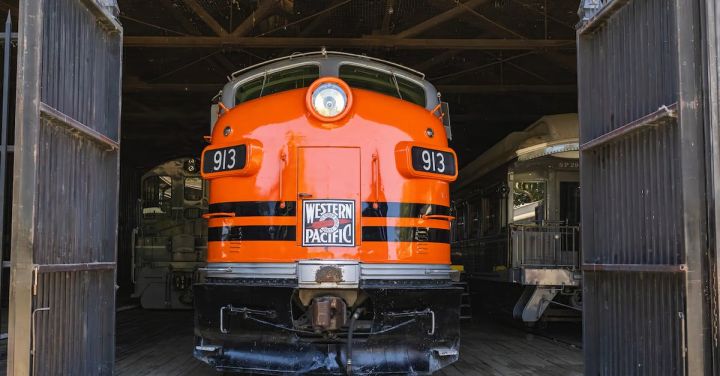Trains, a symbol of progress and industrialization, have played a significant role in shaping the world we live in today. As time marches forward, it is important to preserve and protect these historical relics, not only for their intrinsic value but also to honor the ingenuity and craftsmanship of those who came before us.
Historic train preservation is a labor of love, carried out by dedicated individuals and organizations who understand the importance of maintaining our connection to the past. These train enthusiasts, or “railfans,” spend countless hours researching, restoring, and maintaining vintage locomotives and rolling stock. Their goal? To ensure that future generations can experience the glory days of rail travel.
One such organization is the National Railway Historical Society, which has been instrumental in the preservation of countless historic trains across the United States. Founded in 1935, the NRHS has been at the forefront of preserving America’s railroad heritage, from the famous steam locomotives of the 19th century to the sleek passenger trains of the mid-20th century.
Preserving a historic train is no small feat. It requires a deep understanding of the train’s history, as well as the technical expertise to restore it to its former glory. For many railfans, the process begins with extensive research, scouring archives and historical documents to uncover every detail about the train they seek to preserve. From there, a painstaking restoration process begins, with every effort made to use original materials and techniques whenever possible.
But why go to all this trouble? What makes these relics of the past so special? The answer lies in the unique experience they offer. Stepping aboard a vintage train is like stepping back in time, transporting you to an era when travel was a luxurious and romantic affair. The gleaming brass, the polished wood, the rhythmic chugging of the locomotive – all combine to create an atmosphere that simply cannot be replicated.
Preserving historic trains also serves a larger purpose. By showcasing these relics in museums and operating them on special excursions, we can educate the public about the importance of rail travel in our nation’s history. From the construction of the transcontinental railroad to the advent of the streamlined diesel locomotive, trains have played a vital role in connecting communities and driving economic growth.
While some may argue that historic train preservation is nothing more than a nostalgic pursuit, it is important to remember the lessons of the past. Trains were not just a means of transportation; they were a symbol of progress and innovation. They represented the boundless possibilities of a nation on the move. By preserving these relics, we honor the spirit of those who came before us and their contributions to our modern world.
In conclusion, historic train preservation is about more than just keeping old trains around. It is about preserving our connection to the past, honoring the ingenuity and craftsmanship of those who came before us, and educating future generations about the importance of rail travel. These relics of the past offer a unique experience, transporting us to a bygone era and reminding us of the vital role trains played in shaping our world. So let us celebrate and support those dedicated individuals and organizations who work tirelessly to preserve these historic treasures.
